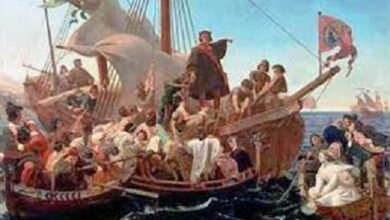When was the Spanish flu vaccine invented causes effects
Spanish flu
Outbreak of influenza virus A that caused the most serious pandemic of the 20th century. In this article we will let you know that When was the Spanish flu vaccine invented?
The Spanish flu was an outbreak of influenza virus A , of the H1N1 subtype , which caused the most serious pandemic of the 20th century . It affected some 500 million people and, between 1918 and 1920, caused the death of around 50 million.
Although it is known as “Spanish flu”, the pandemic outbreak did not arise in Spain, but received this name because that country was one of the only ones that openly reported on the epidemic. The rest of the European countries participated in the First World War and censored the information so as not to demoralize the troops who were fighting on the battle fronts.
Enhance your reading: Causes and consequences of discovery of America detail
Characteristics of the Spanish flu
The main characteristics of the Spanish flu were the following:
- The place of origin of the virus is not known with certainty, although the first known cases occurred in March 1918, at the military base of Fort Riley, Kansas, USA. From there it is assumed that in June of the same year the virus passed to France, carried by the soldiers who were going to fight in the war.
- The pandemic developed in 3 successive waves . The second of these, begun in September 1918, was the deadliest.
- His symptoms consisted of high fever, body tiredness, earache, and abdominal pain with vomiting and diarrhea. The disease then led to pulmonary complications.
- The most affected population was men between 20 and 40 years of age . Other groups with high mortality rates were those under 5 years of age and those over 65 .
- The impact of the pandemic was compounded by the lack of vaccines and the lack of antibiotics (they had not yet been discovered) to treat derived infections.
- In 1920, when the virus had been isolated, the epidemic disappeared as inexplicably as it had appeared.
Causes and consequences of the Spanish flu
Causes
The causes of the Spanish flu were the following:
- The disease was caused by a rapidly spreading virus , however its origin is unknown.
- One of the causes of the rapid expansion was the mobilization of troops and goods in the context of the First World War.
Enhance your reading: Bauhaus architecture characteristics/historical context/stages
Consequences
The main consequences of the Spanish flu were the following:
- Around 50 million people died worldwide, although this is a provisional figure.
- In some remote or isolated areas, the second and third waves of the flu wiped out entire populations . In others, most of the adults died.
- As an indirect consequence, there was an increase in infant mortality caused by the death of adults responsible for caring for children.
- There was a sharp drop in the economy, however there is no reliable information to quantify it.
- The pandemic affected a third of the world’s population . There was a significant decline in the young male population, both due to the flu and the war.
- The decline in the young male population resulted in the opening of the labor market to women .
- In 1919, at the end of the war, the League of Nations or League of Nations was created , the first international cooperation organization. As a consequence of the Spanish flu pandemic, one of the points that were established in its statutes consisted of the commitment to develop joint global policies to face diseases.
End/Vaccine of the Spanish flu
The flu ended naturally by herd immunity when most of the population developed antibodies against the virus. In April 1920 the pandemic was considered over.
